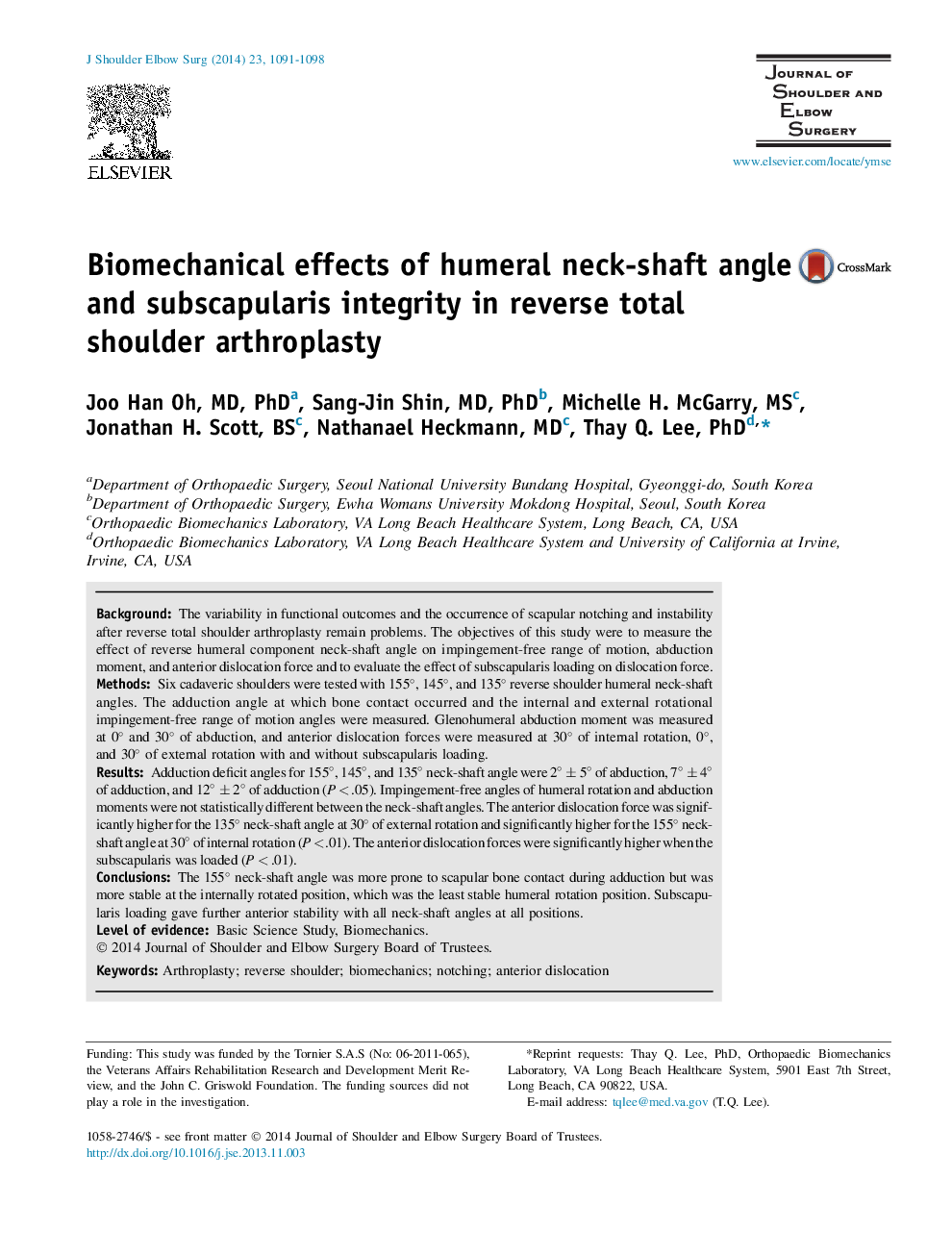| کد مقاله | کد نشریه | سال انتشار | مقاله انگلیسی | نسخه تمام متن |
|---|---|---|---|---|
| 4074106 | 1266999 | 2014 | 8 صفحه PDF | دانلود رایگان |
BackgroundThe variability in functional outcomes and the occurrence of scapular notching and instability after reverse total shoulder arthroplasty remain problems. The objectives of this study were to measure the effect of reverse humeral component neck-shaft angle on impingement-free range of motion, abduction moment, and anterior dislocation force and to evaluate the effect of subscapularis loading on dislocation force.MethodsSix cadaveric shoulders were tested with 155°, 145°, and 135° reverse shoulder humeral neck-shaft angles. The adduction angle at which bone contact occurred and the internal and external rotational impingement-free range of motion angles were measured. Glenohumeral abduction moment was measured at 0° and 30° of abduction, and anterior dislocation forces were measured at 30° of internal rotation, 0°, and 30° of external rotation with and without subscapularis loading.ResultsAdduction deficit angles for 155°, 145°, and 135° neck-shaft angle were 2° ± 5° of abduction, 7° ± 4° of adduction, and 12° ± 2° of adduction (P < .05). Impingement-free angles of humeral rotation and abduction moments were not statistically different between the neck-shaft angles. The anterior dislocation force was significantly higher for the 135° neck-shaft angle at 30° of external rotation and significantly higher for the 155° neck-shaft angle at 30° of internal rotation (P < .01). The anterior dislocation forces were significantly higher when the subscapularis was loaded (P < .01).ConclusionsThe 155° neck-shaft angle was more prone to scapular bone contact during adduction but was more stable at the internally rotated position, which was the least stable humeral rotation position. Subscapularis loading gave further anterior stability with all neck-shaft angles at all positions.
Journal: Journal of Shoulder and Elbow Surgery - Volume 23, Issue 8, August 2014, Pages 1091–1098
